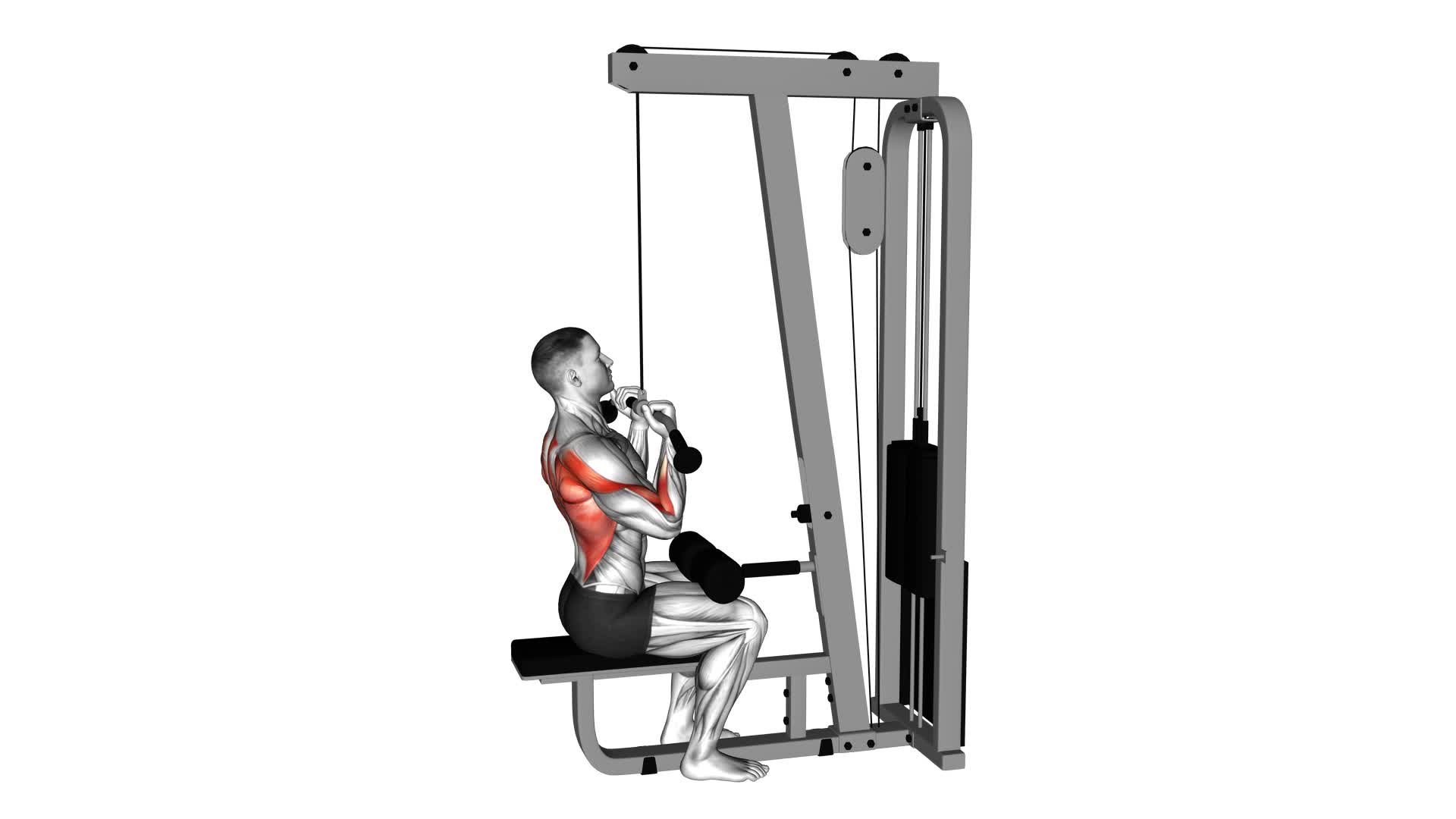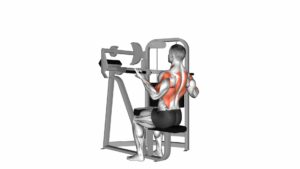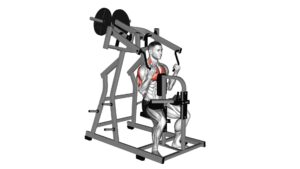Cable Reverse Grip Pulldown – Video Exercise Guide & Tips

Are you looking to strengthen your back and arms? The Cable Reverse Grip Pulldown is the perfect exercise for you.
Watch This Exercise Video
This video exercise guide and tips will help you master the proper form and technique. Whether you're a beginner or advanced, there are variations and modifications for all fitness levels.
Avoid common mistakes and maximize your results with these helpful tips. Get ready to take your workout to the next level and prevent injuries along the way.
Key Takeaways
- The cable reverse grip pulldown targets back muscles, biceps, and forearms more effectively compared to other variations.
- It helps increase overall upper body strength and improve grip strength by engaging the forearms and wrists.
- Performing the exercise with proper form and technique is crucial to reduce the risk of injuries and achieve desired results.
- Variations and modifications can be made to cater to different fitness levels and maximize the benefits of the exercise.
Benefits of the Cable Reverse Grip Pulldown
The Cable Reverse Grip Pulldown offers several advantages for your upper body strength and muscular development. This exercise not only targets your back muscles, but it also activates your biceps and forearms to a greater extent compared to other variations of the pulldown exercise. The reverse grip allows for increased muscle activation in these areas, resulting in improved overall upper body strength.
One of the key benefits of the Cable Reverse Grip Pulldown is the improved grip strength it provides. By gripping the bar with your palms facing you, you engage your forearms and wrists more intensely. This helps to strengthen these muscles, which can be beneficial for various activities that require grip strength, such as lifting weights or performing other pulling movements.
In addition to the increased muscle activation and improved grip strength, the Cable Reverse Grip Pulldown also helps to develop a well-rounded upper body physique. By targeting multiple muscle groups simultaneously, such as your back, biceps, and forearms, you can achieve a balanced and sculpted upper body.
Now that you understand the benefits of the Cable Reverse Grip Pulldown, it's important to learn the proper form and technique for this exercise.
Proper Form and Technique for the Exercise
To perform the Cable Reverse Grip Pulldown exercise correctly, start by sitting on the pulldown machine with your feet flat on the floor and your knees slightly bent. Grab the cable bar with an underhand grip, making sure your hands are shoulder-width apart. Lean back slightly, keeping your chest up and your back straight. This is your starting position.
As you initiate the movement, exhale and pull the cable bar down towards your chest, squeezing your shoulder blades together. Keep your elbows close to your body and focus on using your back muscles to perform the action. Pause for a moment at the bottom of the movement, feeling the contraction in your back.
To avoid common errors, make sure you maintain a stable and controlled motion throughout the exercise. Avoid using your biceps to pull the cable bar down, as this can reduce muscle activation in your back. Additionally, refrain from leaning too far back or using momentum to complete the movement. Focus on a slow and controlled descent of the cable bar and a controlled ascent back to the starting position.
Variations and Modifications for All Fitness Levels
Continue the discussion from the previous subtopic by exploring different variations and modifications for all fitness levels.
When it comes to the cable reverse grip pulldown, there are several options available to suit your needs and preferences. One variation is to change the grip width. By using a wider grip, you can target the muscles in your back more effectively. Conversely, a narrower grip will engage your biceps and forearms to a greater extent.
Another option is to use different equipment. If you don't have access to a cable machine, you can use resistance bands or even a pull-up bar to perform the exercise. These alternatives provide a similar range of motion and muscle activation.
In terms of modifications, there are progression strategies you can employ to increase the difficulty of the exercise as you get stronger. One approach is to add weight to the pulldown by using a weight belt or attaching a dumbbell to your feet. This will challenge your muscles and help you build strength.
Another modification is to perform the exercise on an unstable surface, such as a stability ball or a balance board. This will engage your core muscles more intensely and improve your overall stability. Remember to start with lighter weights and gradually increase the intensity as you progress.
Common Mistakes to Avoid During the Exercise
Avoiding these common mistakes will help you get the most out of the cable reverse grip pulldown. One of the most important aspects to consider is avoiding injury. Many people make the mistake of using too much weight, which can put excessive strain on the joints and muscles. It's crucial to start with a weight that's manageable and gradually increase it as your strength improves.
Another common misconception is using improper form. This can lead to ineffective results and potential injuries. Make sure to maintain a stable position, engage your core, and pull the bar down towards your chest in a controlled manner. Additionally, avoid using excessive momentum or swinging your body during the exercise. This not only reduces the effectiveness of the exercise but also increases the risk of injury.
Lastly, it's important to avoid gripping the bar too tightly. This can create unnecessary tension in the forearms and limit the engagement of the back muscles. By avoiding these mistakes, you can maximize your results and prevent injury during the cable reverse grip pulldown.
Now let's move on to the next section where we'll provide you with tips to maximize your results and prevent injury.
Tips to Maximize Your Results and Prevent Injury
To maximize your results and prevent injury, focus on maintaining proper form and engaging your muscles throughout the cable reverse grip pulldown exercise. By following these tips, you can ensure that you're getting the most out of your workout while minimizing the risk of injury.
First and foremost, it's important to maintain proper form throughout the exercise. This means keeping your back straight, shoulders back, and core engaged. Avoid using momentum to pull the cable down and instead, focus on using your back muscles to perform the movement. This will help to maximize gains and prevent strain on other muscles.
Another key tip is to start with a weight that allows you to perform the exercise with proper form. It's better to start lighter and gradually increase the weight as you become more comfortable and stronger. This will help prevent injury and ensure that you're targeting the correct muscles.
In addition, it's important to listen to your body and not push through pain. If you feel any discomfort or pain during the exercise, stop immediately and assess your form. Pain is a sign that something isn't right and continuing to push through it can lead to injury.
Lastly, don't forget to warm up before starting the cable reverse grip pulldown. This will help prepare your muscles for the exercise and reduce the risk of injury.
Frequently Asked Questions
How Many Sets and Reps Should I Do for the Cable Reverse Grip Pulldown?
For the cable reverse grip pulldown, it's important to find the optimal weight and intensity that challenges you but doesn't compromise your form. Aim for 3-4 sets of 8-12 reps to build strength and muscle.
Remember to start with a weight that allows you to complete the desired number of reps with proper technique. As you progress, you can increase the weight or try variations like using different grip attachments or adjusting the seat height for added challenge.
Can I Do the Cable Reverse Grip Pulldown if I Have Shoulder or Wrist Issues?
If you have shoulder or wrist issues, it's important to consider your shoulder mobility and modify the cable reverse grip pulldown accordingly.
There are modification options available to protect your shoulders and wrists while still targeting the desired muscles.
It's always best to consult with a fitness professional or physical therapist who can assess your specific situation and provide guidance on the appropriate modifications for you.
How Often Should I Incorporate the Cable Reverse Grip Pulldown Into My Workout Routine?
To determine how often to include the cable reverse grip pulldown in your workout routine, consider your fitness goals and current program.
The cable reverse grip pulldown is an effective exercise for targeting the back muscles and improving grip strength. It can be performed as part of a full-body or upper-body workout, 2-3 times a week.
However, it's important to vary your exercises and incorporate other back exercises for a well-rounded routine.
Can I Use a Resistance Band Instead of a Cable Machine for the Cable Reverse Grip Pulldown?
Yes, you can use a resistance band as a modification for the cable reverse grip pulldown. It's a great alternative if you don't have access to a cable machine.
The resistance band will provide similar resistance and target the same muscles, helping to strengthen your back and arms.
Make sure to secure the resistance band to a stable anchor point and perform the exercise with proper form to maximize its effectiveness.
Is It Necessary to Use a Specific Grip Width for the Cable Reverse Grip Pulldown?
When performing the cable reverse grip pulldown, it's important to consider the grip width that you use. Different grip variations can target different muscles and provide various benefits. Experiment with wider or narrower grips to find what works best for you.
A wider grip might engage the back muscles more, while a narrower grip might target the biceps. Remember to maintain proper form and listen to your body to prevent any discomfort or injury.
Conclusion
In conclusion, the cable reverse grip pulldown is a highly beneficial exercise that targets the muscles in your back and arms. By maintaining proper form and technique, you can maximize your results and prevent injury.
With variations and modifications available for all fitness levels, this exercise can be tailored to individual needs. Avoiding common mistakes and following these tips will help you achieve optimal results and improve your overall strength and fitness.

Author
Years ago, the spark of my life’s passion ignited in my mind the moment I stepped into the local gym for the first time. The inaugural bead of perspiration, the initial endeavor, the very first surge of endorphins, and a sense of pride that washed over me post-workout marked the beginning of my deep-seated interest in strength sports, fitness, and sports nutrition. This very curiosity blossomed rapidly into a profound fascination, propelling me to earn a Master’s degree in Physical Education from the Academy of Physical Education in Krakow, followed by a Sports Manager diploma from the Jagiellonian University. My journey of growth led me to gain more specialized qualifications, such as being a certified personal trainer with a focus on sports dietetics, a lifeguard, and an instructor for wellness and corrective gymnastics. Theoretical knowledge paired seamlessly with practical experience, reinforcing my belief that the transformation of individuals under my guidance was also a reflection of my personal growth. This belief holds true even today. Each day, I strive to push the boundaries and explore new realms. These realms gently elevate me to greater heights. The unique combination of passion for my field and the continuous quest for growth fuels my drive to break new ground.



